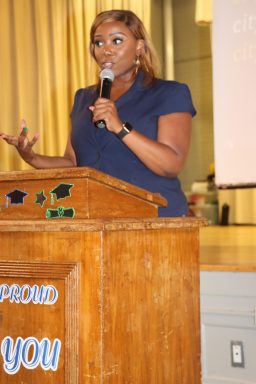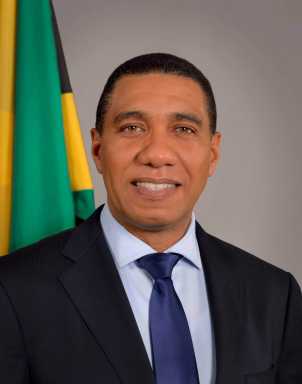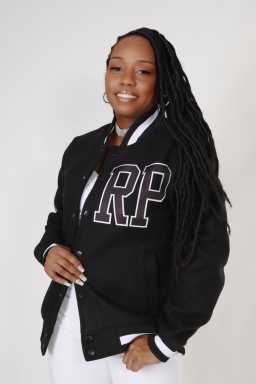Listeners:
Top listeners:
-
play_arrow
RadioJLR Just Press Play

Brooklyn Council Member Farah N. Louis on July 29 launched a series of informational sessions and town halls across District 45 to hear constituents’ views on the City of Yes for Housing Opportunity.
The initiative is a zoning proposal proposed by Mayor Eric Adams and the Department of City Planning (DCP) that would loosen many restrictions and regulations on how homeowners and property owners can build in their neighborhoods.
Louis, the daughter of Haitian and Bahamian immigrants, who represents the 45th Council District covering Flatbush, Midwood, East Flatbush, Flatlands, Marine Park and Canarsie, told Caribbean Life that she plans to conduct similar townhalls in her district in the ensuring weeks.
Monday’s initial town hall meeting at P.S. 315 K targeted communities in Midwood, sharing details of the plan and associated proposals.
She said the major proposals that affect homeowners of one-family and two-family buildings are: Accessory Dwelling Units: allowing residential units and bedrooms conversions in basements and garages; Transit-Oriented Development: allowing building one to two additional floors in buildings with wide streets that are with half-a-mile from a train station; District Fixes: allowing building additional bedrooms by reducing required size of backyards and driveways; and Town Center Zoning: allowing building housing on top of single-story commercial businesses.
The crowd listening attentively at the presentationPhoto by Nelson A. King
Since many communities have specific questions and concerns about how these proposals will affect their neighborhoods, especially where one-family and two-family neighborhoods may be allowed to change as a result of the changes, Louis said she partnered with DCP “to bring accurate information to homeowners and get feedback from the community.”
Perris Straughter, director of Planning and Land Use at the City Council, also attended Monday night’s town hall.
Louis said she and her City Council colleagues “will have to vote on this proposal and potentially make modifications to achieve the best plan for all New Yorkers.”
Veronica Brown, a DCP representative, told attendees that the City of Yes for Housing Opportunity amendment would make it possible to build “a little bit more housing in every neighborhood.
“A little more housing in every neighborhood means we can make a big impact on the housing shortage without dramatic change in any one neighborhood,” she said, stating that New York City faces “a severe housing shortage that makes homes scarce and expensive.”
DCP Representative Veronica Brown makes presentationPhoto by Nelson A. King
Brown said NYC is not building enough housing to meet New Yorkers’ needs, and that, at the same time, average household size is declining.
The DCP representative said almost all of New York City’s recent housing production has been concentrated in a few neighborhoods, and that some neighborhoods have created virtually zero new housing.
Brown said this results in, among other things, high rents; displacement and gentrification pressure; segregation; homelessness; poor housing quality; and tenant harassment.
She said over 52.6 percent of Brooklyn renters are “rent burdened,” meaning that they spend over 30 percent of income on rent.
Zoning, Brown said, is one tool to address NYC’s housing shortage, stating that zoning regulates the density and use of what is permitted to be built.
Another section of the audiencePhoto by Nelson A. King
She said zoning can include requirements for income restricted affordable housing, does not directly build or fund new housing and is within the city’s control.
Brown said other tools to support housing include: Subsidies and tax incentives to create and preserve affordable housing; support for homeownership models; and tenant protections.
She said DCP aims to update zoning rules to create more housing and more types of housing across all NYC neighborhoods.
“A little more housing in every neighborhood means a lot of housing overall without dramatic change or overtaxed infrastructure,” said Brown, stating that this approach can address the root causes of high housing costs; support job growth and New York City’s economy; and make NYC more environmentally-friendly by building more housing in areas with great access to jobs and transit.
Brown said sites must be near transit; over 5,000 square feet; on the short end of the block or facing a street over 75 feet wide; and buildings will be three to five stories.
She said transit-oriented development (TOD) allows modestly-sized, transit-oriented apartment buildings in low-density residence districts.
But some attendees at the townhall expressed deep concern and opposition to the City of Yes initiative.
Lindsay Lamb expresses serious concern about the city initiativePhoto by Nelson A. King
Lindsay Lamb, a resident of the Prospect Park South neighborhood, said she was particularly concerned about the proposed TOD.
“While I understand the goals of TOD to promote sustainable and efficient urban growth around transit hubs, I am apprehensive about the specific details and implications outlined in the current proposal,” she said. “I am also appalled at how transit hubs are defined as within 0.5 miles of a subway station, which would rezone 100 percent of Manhattan, the vast majority of Brooklyn, and about three-quarter of The Bronx all within one bill, as shown in DCP’s own maps.”
Lamb said DCP is especially concerning to a neighborhood like Flatbush, where the majority of the Victorian lots are over the required 5,000 sq. ft. and on 75-foot-wide streets.
On her objections on density and infrastructure strain, she said the proposed TOD “appears to prioritize density without considering the strain it would place on our infrastructure, which already exceeds capacity.
“Personally, when it comes to our sewer system, my basement floods when it rains, along with many of my neighbors,” Browne told the town hall. “The proposed increased population density in Victorian Flatbush will exacerbate this issue as we will have more toilets, showers, washer machines, and dishwashers while reducing the permeable land.”
Joe Enright described the city plan as “one size fits all”Photo by Nelson A. King
Beyond catastrophic flooding, she noted that the neighborhood was originally designed as a suburb, adding that “the unmanaged, as-of-right development proposed by TOD will exacerbate the traffic congestion and make our already overstretched MTA hazardous.”
Instead of concentrating on city-wide initiatives, Browne urged DCP to identify underdeveloped areas as individual communities that have the potential to accommodate needed development and enhance the day-to-day lives of both current and future residents.
“In Flatbush specifically, we already went through rezoning in 2009 that identified major thoroughfares, including Coney Island Avenue, that are ripe for development,” she said. “The benefit of this is that development here would displace the fewest residents while providing a surplus of future homes.”
“It is crucial that any development plan reflect the diverse needs and concerns of all residents, and prioritizes long-term environmental, social and economic sustainability,” Brown stressed.
Glenn Wolin warns the city plan is “going to destroy good neighborhood.”Photo by Nelson A. King
One attendee, identified as Nancy, said the city’s proposal “can turn Flatbush as a hodgepodge of dense communities.”
Glenn Wolin also said the initiative is “going to destroy good neighborhood.”
“Developers build where they can make money,” he added. “This is a disaster.”
Another attendee described the proposal as “point-rushed.”
“This proposal should be reconsidered because this is our life,” she urged.
Similar posts
© 2025. All Rights Reserved by Radio-JLR



Post comments (0)